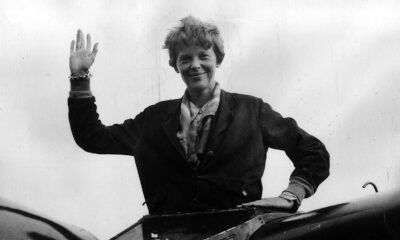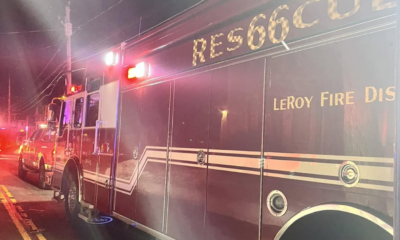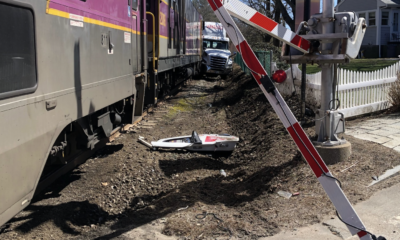News
Fossil Footprints In Oregon Show Ancient Shorebirds, Cats And Lizards Behaved Like They Do Today
-

 Celebrity News6 days ago
Celebrity News6 days agoKourtney Kardashian Caught in the Middle as Exes Scott Disick and Travis Barker Refuse to Play Nice
-

 News1 week ago
News1 week agoScott Peterson Breaks His Silence as New Evidence Could Clear His Name
-

 News1 week ago
News1 week agoUFO Researcher Says The Vatican Is Hiding The Truth About A Sighting
-

 Celebrity News1 week ago
Celebrity News1 week agoKim Kardashian’s Secret Romance With Mystery Businessman Ends Over Fame Pressure
-

 Celebrity News4 days ago
Celebrity News4 days agoThe Gayle King-Starring ‘CBS Mornings’ Face All-Time Low Ratings Amid Brutal Cost-Cutting Measures
-

 Celebrity News5 days ago
Celebrity News5 days agoHoda Kotb In Talks For Daytime Talk Show, Taking Over Kelly Clarkson’s Spot Following ‘Today’ Exit
-

 Celebrity News3 days ago
Celebrity News3 days agoBarack & Michelle Obama ‘Barely Even Talked’ During Very Public Dinner Outing in Washington D.C.
-

 Celebrity News4 days ago
Celebrity News4 days agoFormer ‘Good Morning America’ Meteorologist Rob Marciano Struggling to Find Camaraderi at CBS
-

 Celebrity News6 days ago
Celebrity News6 days agoJennifer Garner Rekindles Romance With John Miller, But Still Has Cold Feet Over Engagement Plans
-

 Style1 week ago
Style1 week agoFran Drescher, Gillian Anderson & Jessica Chastain Light Up the Red Carpet with Glamour and Grace
-

 Celebrity News5 days ago
Celebrity News5 days agoBruce Willis’ Family Struggles With Fallout as Wife Emma Prepares to Release Personal Memoir on His Dementia Battle
-

 Celebrity News5 days ago
Celebrity News5 days agoArchaeologist Claims To Have Solved Amelia Earhart Mystery With Stunning Pacific Discovery













